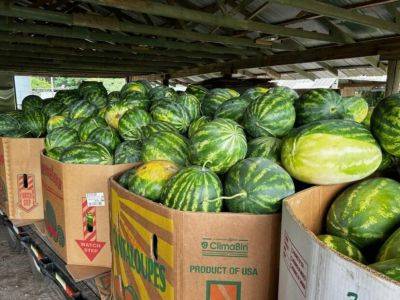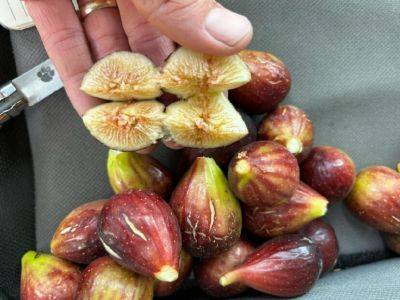Zack Snipes
SC Fruit and Vegetable Field Report January 18, 2022
24.07.2023 - 12:05 / hgic.clemson.edu
Rob Last reports, “In our area, crops are developing well with few pest or disease issues currently. Some brassicas are displaying a reddening to the older leaves associated with reduced phosphorous uptake. Phosphorous uptake can be reduced in cold temperatures but will recover when we see some warmer temperatures. There is no response to an additional application. Where strawberries are flowering or have fruit, it is advisable to remove those to minimize sources of Botrytis gray mold for later in the year.”
Zack Snipes reports, “Strawberry questions have begun rolling this week with the threat of lower temperatures at the end of the week. For growers in the coastal plains, I would not cover my berries. Temperatures are predicted to get into the low to mid-20s. At the current stage of development, it would take lower temperatures and extended periods of time to do crown damage. Will you lose berries and blossoms? Yes, but right now, we shouldn’t be trying to save those anyway. After the weather passes, make sure to clean/sanitize your fields. I am seeing a good bit of botrytis (gray mold) on early fruit. Some growers are trying to save the fruit, but we have to keep in mind that it is mid-January and the plants need to size up and experience a few cold events. We have a long season ahead of us.”
Justin Ballew reports, “The weather has been strange over the last couple of weeks. The week after Christmas was very warm and caused strawberries to push out a lot of blooms that were then killed by the cold. We have a ton of dead blooms and fruit on the plants right now. Eventually, these will need to be removed from the plants, as they will become a significant source of Botrytis inoculum if allowed to remain. I’ve had some
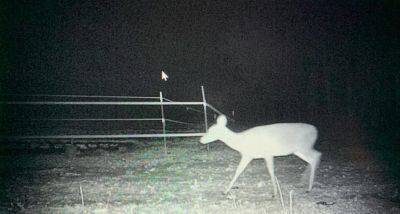
SC Fruit and Vegetable Field Report – January 25, 2021
Rob Last reports, “Strawberry crops in the area are looking good with good crown development. We are seeing open flowers and some fruit set based on warmer conditions. These crops are cause for some concern as we are likely to see damage from forecast cold snaps. There is evidence of botrytis (gray mold) in crops on cold damaged flowers and fruit. Sanitation can really help to mitigate the spread of the disease. Spider mites remain active and in places are requiring treatment. Remember to avoid pyrethroids for mite control as these can flare mite populations.”
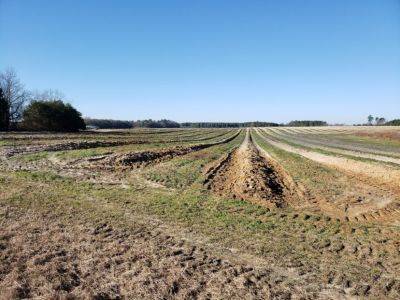
SC Fruit and Vegetable Field Report January 4, 2021
Happy New Year! We hope everyone had a great holiday season and is off to a good start in 2021. We have several virtual grower meetings coming up over the next two months, so keep an eye on the “Upcoming Events” page for info. Also, don’t forget the Southeastern Regional Fruit and Vegetable conference kicks off virtually this week, and it’s not too late to register.
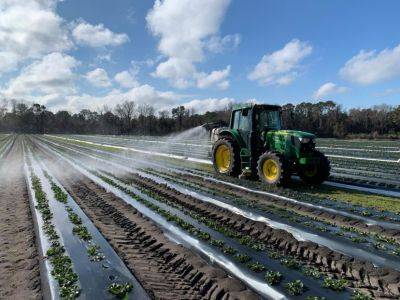
SC Fruit and Vegetable Field Report January 19, 2021
Dr. Matt Cutulle reports, “Burndown herbicide efficacy can be reduced in colder weather, especially systemic products such as glyphosate (Reduced translocation in the cold means herbicide does not move through the plant as much).”

SC Fruit and Vegetable Field Report January 11, 2021
Rob Last reports, “Vegetable crops are growing out of the impacts of frost well. There is active Alternaria in places on brassica crops. Insect activity in vegetable crops in the area remains low. Strawberry crops are moving well, with a few spider mites and aphids being observed. Remember, if mite treatment is needed, use a specific miticide to target the pest to avoid flaring populations. If you need a second pair of eyes to help scout, then please give me a shout.”
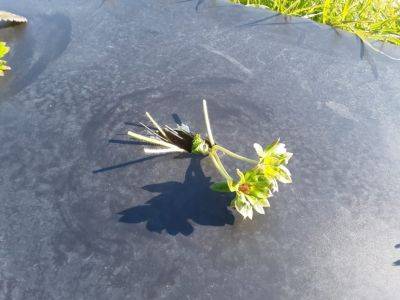
SC Fruit and Vegetable Field Report – January 31, 2022
Rob Last reports, “Pest and disease issues in the area remain very low; however, as temperatures rise, we expect activity to increase. Although it is quiet, it is still essential to continue to scout. Assessment of crops indicates that we have escaped the worst of any chill injury or loss of plants. Pruning of fruit crops continues while dormancy holds and labor begins to return to the area.”
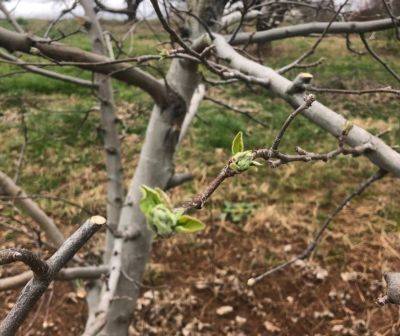
SC Fruit and Vegetable Field Report- March 14, 2022
Dr. Matt Cutulle reports, “I saw my first nutsedge plants this year pop up in the plastic mulch of a fellow researcher’s trial last week in Charleston. Soil temperatures in plastic mulch systems are going to be higher, which may lead to earlier sprouting of yellow nutsedge tubers. New tubers begin forming four to six weeks after a new shoot emerges. Individual nutsedge plants may eventually form patches 10 feet or more in diameter, thus it is important to practice field sanitation once an infestation is recognized.”
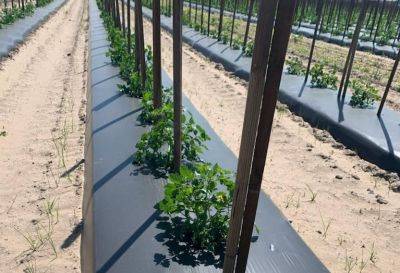
SC Fruit and Vegetable Field Report – April 18, 2022
Zack Snipes reports, “It has been a very windy spring. The winds are drying out our soils and beating up plants. I have looked at some tomatoes, and the ones that aren’t tied are wind-whipped, and the ones that are tied have callus tissue forming where the string is touching them. We have some beautiful lettuce and greens coming in right now, along with spring onions. I have also seen some squash coming in on farms that grew squash in high tunnels. Strawberry plants are still small and have very few blooms for this time of year. We are harvesting highbush blueberries in high volumes right now. I think we escaped more cold damage than previously expected.”
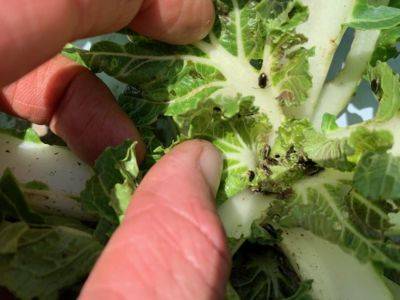
SC Fruit and Vegetable Field Report – May 31, 2022
Zack Snipes reports, “It seems like everything is coming in from the fields right now. We got some rain but could really use some more. I am seeing lots of aphids on a variety of crops (melons, cukes, eggplant). I am also seeing ladybird beetles and parasitized aphids in these fields, which means our predators are out there working for us. Bacterial wilt and Southern blight are starting to appear on tomatoes as well. Knowing the difference and preparing for next season’s crop is critical. It is getting hot and is still windy, so growers might consider adding one or more irrigation cycles to their fields. Remember that in our sandy soils, any irrigation event over an hour is just wasting water. More frequent 30-45 minute cycles are more efficient.”
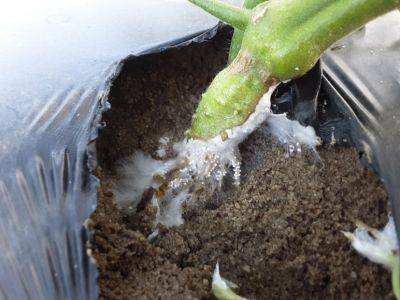
SC Fruit and Vegetable Field Report – June 6, 2022
Rob Last reports, “Insect and disease activity is increasing in the area, across a broad range of crops. In cucurbits, we are seeing powdery mildew and gummy stem blight in watermelon. Remember to keep spray intervals tight. Loopers are also being found in the area, and applications to manage rind worms will be beneficial as we rapidly approach harvest. Fusarium wilt of watermelons is showing up in many fields. At this stage, there is no effective treatment; however, soil temperatures are likely to reduce the incidence of new infections. Tomatoes and peppers are developing well with Southern blight and bacterial wilt in evidence. Spider mites are very active right now. Blackberries are just coming to harvest with good flavor and quality. Remember to scout your crops regularly to ensure timely applications can be made.”
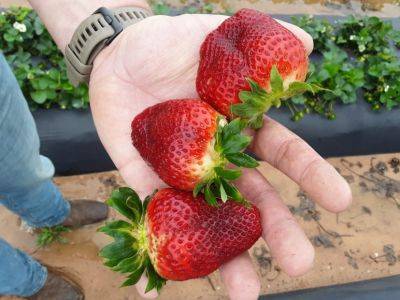
SC Fruit and Vegetable Field Report March 28, 2022
Rob Last reports, “The first of this season’s strawberries are coming to market with good quality. Growers still need to be very mindful of spider mites. Populations are around in the area but are variable. As we get into harvest season, gray mold management will be critical, so sanitation and appropriate fungicide applications will be needed. Otherwise, preparations for watermelon planting and some early cantaloupes have been sown. Damage assessments on later variety peaches will continue.”
